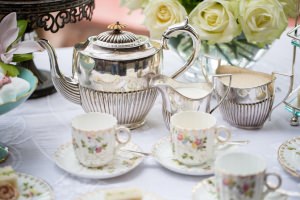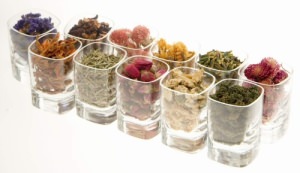As the cold weather continues, our thoughts turn to a nice, hot cup of tea. This is the first part of a two part series on Tea Etiquette.
Tea became popular thousands of years ago. Although there is no known date for the discovery of tea, a popular legend attributes it to Chinese Emperor Shen Nung, who discovered that boiling water made it safe to drink. As the legend goes, some leaves from a tree fell into the Emperor’s hot water that he was waiting on to boil. He drank the water and found it to be very appealing. Upon further investigation, he found that the leaves came from the Camellia Sinensis tree. And the love of tea was born.
Tea is the second most consumed drink on the planet, second only to water. Over half of the tea grown today comes from Sri Lanka and India. Hawaii, South Carolina, Alabama, Washington, Oregon, Mississippi and New York are the only states in the United States that grow, process and market black tea.
There are three primary types of tea:
- Black tea, which is fermented
- Oolong tea, which is partially fermented, and
- Green tea, which is unfermented
Other types of tea include:
- White teas, which are rare and the least fermented. White teas fall between Oolong and Green teas.
- Herbal teas, which are not produced from the tea plant at all. They are blends of herbs that are often processed and flavored before packaging.
- Flavored teas, which are made by blending black tea with other natural ingredients such as spearmint leaves, or spraying them with essences.
Each type of tea has many different varieties from countries all over the world. Along with India and Sri Lanka, tea is produced in China, Japan, Indonesia, Kenya, Taiwan, Turkey, Iran, Brazil, Russia, Mozambique, Uganda, Malawi, Bangladesh, Tanzania, Zaire, Vietnam and Argentina. Each type of tea is enjoyed differently. For example, Black teas may be enjoyed with milk, sugar or lemon, whereas oolong and green teas are enjoyed without anything added.
There are many different types of tea service. In this blog, we have summarized three of the most common services.
- Afternoon Tea: Served with tiny sandwiches to blunt the appetite; scones; pastries (served as three courses between 3:00 p.m. and 5:00 p.m.)
- Cream Tea: Served with scones, jams, clotted cream (light repast)
- Light Tea: Served with scones and sweets (lighter version of Afternoon Tea)
In Thursday’s blog, we will share three more types of Tea Service. In the meantime, stay warm and tweet us your questions to @austinprotocol, or post a question on Facebook at www.facebook.com/protocolww.


